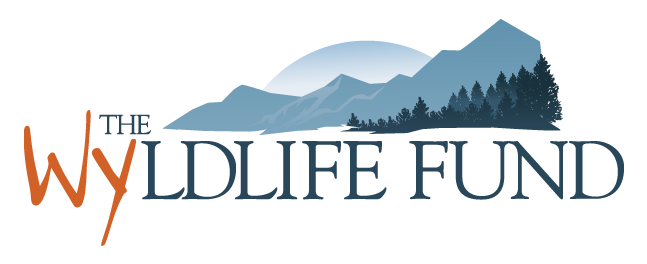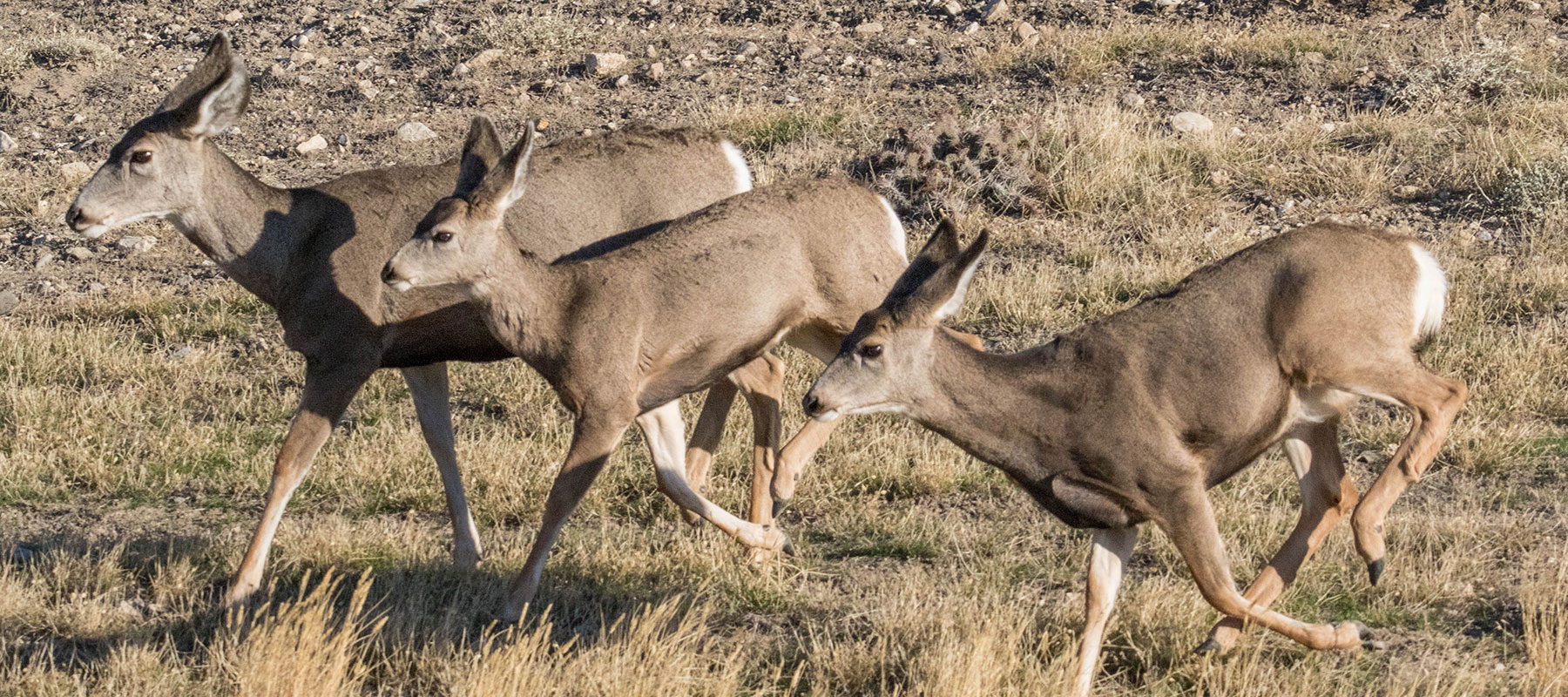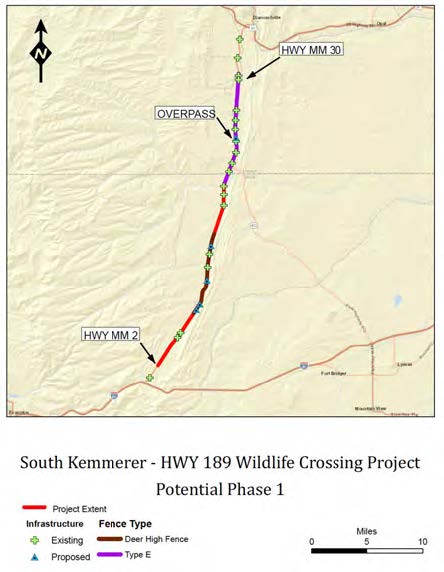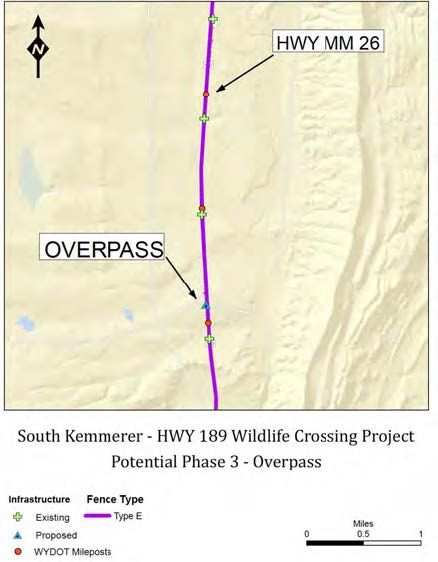Wyoming is poised to continue to lead the nation in the planning and construction of wildlife crossings. Annually, there are an average of 6,000 vehicle collisions with big game in Wyoming, resulting in $20-23 million in wildlife costs and $24-29 million in personal injury costs. Game and Fish, as well as the Wyoming Department of Transportation, The WYldlife Fund and various wildlife and community groups, want to reduce those numbers by taking action to give wildlife the green light for safe passage. Highway underpasses and overpasses, coupled with fencing, can reduce crashes by 80-90 percent and ensure animals can safely cross roads to get to seasonal ranges. The forthcoming economic development opportunities in this region, and resulting increase in motor vehicle traffic, has made it imperative that we work together to complete the Kemmerer Highway 189 Wildlife Crossing Project in order to protect human lives and save wildlife.
THE PROBLEM
Mule deer and pronghorn are negatively impacted along this stretch of Highway 189. This conclusion is backed up through vehicle collision reports from WYDOT, and these movements are exhibited from collared mule deer, both from the Uinta and Wyoming Range mule deer herds. The right-of-way (ROW) fencing along Highway 189 is almost exclusively netwire which creates a movement barrier for pronghorn. This project would promote connectivity by benefiting migration patterns along with protecting wildlife on winter range.
While fall and spring migrations cause spikes in movement across HWY 189, there is continued intermittent movements back and forth HWY 189 throughout winter as it bisects traditional winter range for both previously mentioned deer herds. There are
two prominent winter range complexes that parallel both sides of the highway. The “hogback” complexes and Cumberland Flats make up what is the Leroy winter range and both parallel HWY 189 from nearly MM0 North along I-80 to nearly the Ham’s Fork Drainage up past MM30, creating the need for vehicle/wildlife collision mitigation along the majority of HWY 189 – South of Kemmerer. While existing ROW fence is net-wire, it is permeable for mule deer and allows for movement onto the highway increasing likelihood of wildlife vehicle collisions.
THE SOLUTION
Focusing on priorities for immediate alleviation of wildlife-vehicle collisions will be considered during phasing.
Phase One
- Phase 1 will address MM8-15 where mule deer collisions are highest and MM20-30 where pronghorn collisions are greatest
- Utilize 2 existing underpass structures as well as placement of up to an additional 4 underpass structures will be considered in the stretch of MM8-15
- Current net-wire fencing will be removed on both sides of the ROW and replaced with deer high fence.
- Deer high fencing to be constructed in association with these structures for the entirety of MM8-15 to funnel movement through these existing and proposed structures.
Phase Two
- Removal of existing net-wire and expansion of deer high fence on both sides of ROW from MM2-8 and MM15-20, which would incorporate and tie in 5 existing structures, effectively funneling wildlife to these existing structures (no new structures are proposed for this phase).
- Strategically place gates and “jump out” structures in order to alleviate instances of animals getting caught on right of way within the deer high fence portion this phase.
Phase Three
- Construction of a wildlife overpass which was previously sited in 2009 by WYDOT and WGFD at a potential location of MM24.15. This overpass is designed to “reconnect” a ridge that was carved out during the initial construction of HWY189. Potentially, reducing the amount of dirt necessary to complete the project. This phase would involve the construction implementation of the overpass, as well as associated wing barrier fencing to direct movements of wildlife to utilize the overpass.




